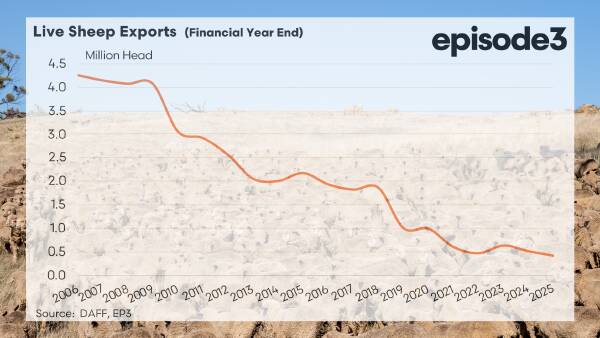The live sheep export industry faces significant challenges as markets shrink globally, leading to a precarious future for the trade. Major exporters like Australia and New Zealand are experiencing a decline in demand, particularly from key markets in the Middle East and the European Union. This trend is contributing to a growing consensus that the industry may not survive the next decade.
In 2023, Australia exported approximately 1.5 million live sheep, a stark decrease from the peak of 2.5 million in 2020. The Australian Livestock Exporters’ Council has reported that the industry generated around $1 billion in revenue last year. However, with tightening regulations and shifting consumer preferences towards more sustainable practices, the outlook for live sheep exports is increasingly bleak.
Market Challenges and Regulatory Pressures
The decline in live sheep exports can largely be attributed to two factors: diminishing markets and increasing regulatory pressures. Countries such as the United Kingdom and members of the European Union have implemented bans on live animal exports for welfare reasons, citing concerns over the treatment of animals during transport. These regulations have not only reduced the number of available markets but also intensified scrutiny on the industry as a whole.
In the Middle East, traditional customers are increasingly leaning towards alternative sources of meat, such as chilled and frozen lamb, which are considered more humane and sustainable. This shift threatens the viability of the live sheep trade, as consumers become more conscious of animal welfare and environmental impact.
Future Prospects and Industry Response
As the industry grapples with these challenges, some stakeholders are advocating for a transition towards more sustainable practices. The Australian government is currently exploring various options to support farmers and exporters in adapting to changing market conditions. This includes investment in technology that improves animal welfare during transport and enhances the quality of meat products.
Additionally, the industry is facing pressure to diversify its export markets. Countries in Asia, including China and Indonesia, have been identified as potential growth markets, but establishing a foothold in these regions requires significant adjustments and investment.
While the future of live sheep export remains uncertain, industry leaders are urging a collaborative approach to navigate these turbulent waters. The Australian Livestock Exporters’ Council emphasizes the need for dialogue between government, exporters, and animal welfare organizations to find solutions that safeguard both the industry and animal welfare.
In conclusion, the live sheep export trade is at a critical juncture, facing diminishing markets and increasing regulatory scrutiny. As stakeholders work to adapt and innovate, the next few years will be pivotal in determining whether this industry can sustain itself in a rapidly changing global landscape.





























































